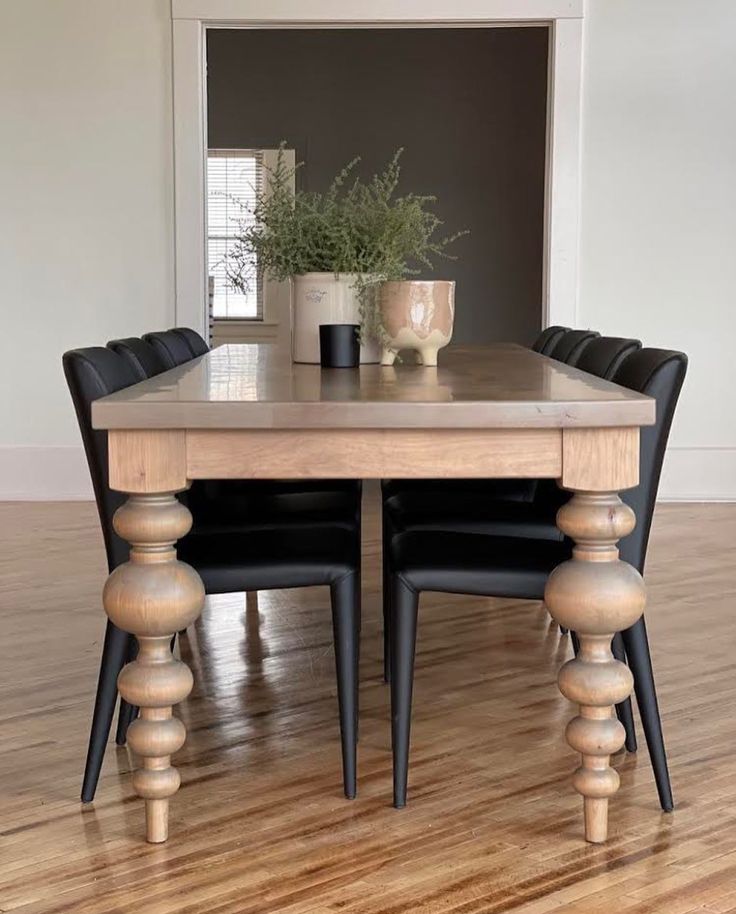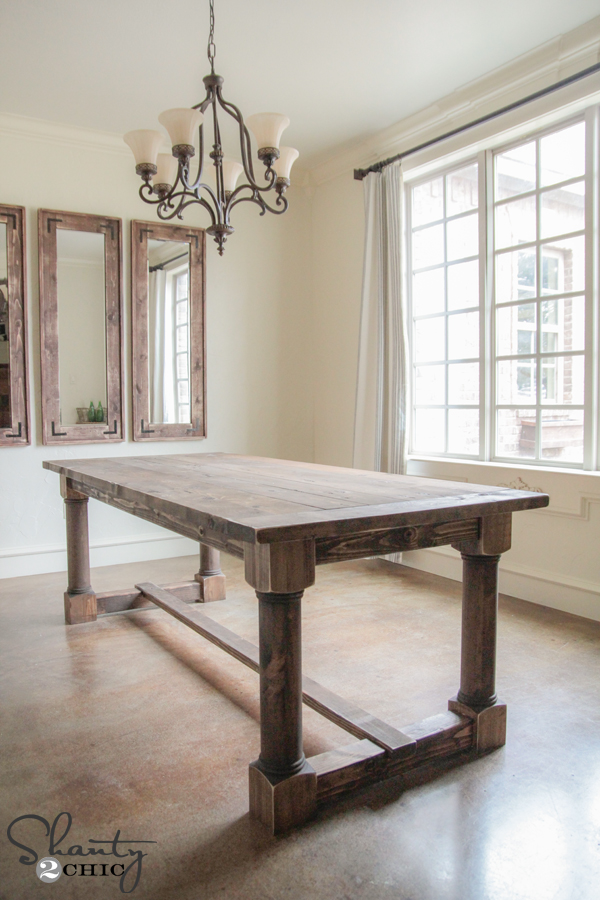Enhance Your Dining Room with Unique and Modern Dining Room Table Legs
Enhance Your Dining Room with Unique and Modern Dining Room Table Legs
Blog Article
From Traditional to Modern: Find the Perfect Dining-room Table Legs for Your Style
While traditional designs such as cabriole and transformed legs evoke a feeling of ageless sophistication, contemporary designs like barrette and geometric choices offer a possibility for striking aesthetic passion. As you think about these elements, the inquiry stays: just how can you seamlessly incorporate these diverse leg styles to create an unified dining experience?
Understanding Table Leg Styles
The variety of dining-room table leg styles can dramatically influence both the visual appeals and functionality of the area. Each leg style adds special visual elements and functional features, dealing with diverse design preferences and use needs. Understanding these designs is crucial for choosing the ideal table that aligns with your general interior style vision.
As an example, conical legs provide a tidy, traditional appearance that can enhance a room's sophistication, while pedestal bases supply stability and make the most of legroom, making them optimal for smaller spaces. Barrette legs, a characteristic of mid-century modern design, present a commercial panache, enabling for an airy, open feeling. In a similar way, trestle legs stimulate rustic charm, providing robust support and a feeling of eternity.
Furthermore, the option of products plays a significant duty. Wood legs can bring heat and texture, whereas metal choices commonly share a smooth, contemporary vibe. Eventually, understanding table leg styles is necessary for developing a natural dining area that shows individual style while guaranteeing practicality and comfort. By attentively taking into consideration these aspects, you can enhance both the useful and visual charm of your eating area.
Standard Table Leg Options
When selecting dining-room table legs, traditional choices often embody timeless beauty and workmanship. These styles show a rich heritage and a dedication to quality, making them perfect for those that value timeless visual appeals.
One of the most iconic standard leg designs is the cabriole leg, identified by its graceful rounded form. This layout commonly features decorative carvings and is most generally located in Queen Anne and Chippendale furniture. Another prominent option is the transformed leg, which boasts a collection of smooth, rounded forms that supply a classic look while keeping security.
Additionally, the straight leg, while easy, provides a sturdy and basic framework that can mix effortlessly with a selection of tabletop styles. For those drawn to ornate outlining, claw-and-ball feet legs evoke a feeling of splendour and can work as a spectacular centerpiece in any type of eating room.
Last but not least, stand bases, although not strictly legs, offer an alternative standard choice that enables for adequate legroom and can be perfectly sculpted. Each of these conventional leg designs adds to the total ambiance of an eating space, weding feature with visual charm.

Modern Table Leg Layouts
Modern table leg styles use a varied variety of styles that stress clean lines and innovative products. These designs commonly prioritize performance while functioning as striking centerpieces within a dining space. Minimalist appearances are widespread, with legs crafted from materials such as steel, glass, and crafted timber, which add to a airy and contemporary feel.
One prominent style is the hairpin leg, identified by its slim, tapered structure that gives security without overwhelming the table top (dining room table legs). This style is typically located in mid-century contemporary furniture and can easily complement numerous table forms. An additional trend is making use of geometric shapes, where legs might handle unbalanced or angular types, including visual rate of interest and a touch of creativity

Blending Designs for Distinct Spaces
Typically, home owners seek to develop distinct eating spaces that reflect their personal style by mixing various design elements. This method permits the consolidation of varied aesthetic appeals, causing a harmonious yet distinctive atmosphere. Coupling a rustic wood table with smooth, modern steel legs can produce a captivating comparison that raises the space's overall allure.
In addition, integrating vintage table legs with modern table tops can evoke a sense of history click to read more while preserving a contemporary sensibility. Such combinations not just display private taste however likewise motivate creativity, allowing homeowners to curate a room that feels both individual and welcoming.
Shade plays a critical duty in this mixing procedure; selecting table legs that match or comparison with the existing color pattern can enhance visual passion. Whitewashed legs can soften the daring of a dark table surface area, developing a well balanced aesthetic.
Tips for Selecting the Right Legs
Selecting the right table legs is important for attaining both functionality and aesthetic charm in your eating room. Begin by taking into consideration the total style of your area. Typical settings gain from legs that include intricate makings or transformed styles, while contemporary areas may call for streamlined, minimal designs.
Next, analyze the height and security of the legs. dining room table legs. Typical eating tables vary between 28 to 30 inches in elevation, so guarantee the legs complement this dimension for convenience. Additionally, robust products, such as wood or steel, can improve stability and durability
Review the leg form also-- alternatives consist of right, next page tapered, or stand styles. Straight legs use a classic appearance, while tapered legs can add a touch of sophistication. Pedestal bases supply enough legroom and are suitable for smaller spaces.
Verdict
In summary, selecting the perfect dining-room table legs requires careful factor to consider of both modern-day and traditional designs. Typical options such as cabriole and turned legs use timeless elegance, while modern-day styles like barrette and geometric shapes give a contemporary touch. By integrating leg style, elevation, and product with the total click here to find out more design, a cohesive and welcoming environment can be achieved. Eventually, the selected table legs should mirror the desired visual, boosting the dining experience within the space.
The range of eating area table leg styles can substantially affect both the aesthetics and capability of the space. Inevitably, understanding table leg styles is necessary for creating a cohesive dining location that reflects individual design while guaranteeing practicality and comfort.One of the most famous conventional leg styles is the cabriole leg, identified by its graceful bent form. Straight legs use a traditional look, while tapered legs can include a touch of sophistication.In summary, selecting the excellent dining area table legs needs mindful factor to consider of both traditional and modern-day designs.
Report this page